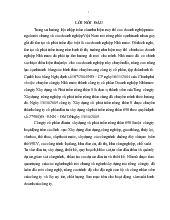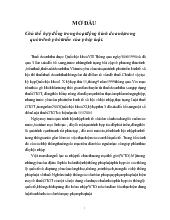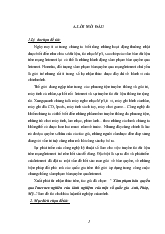Development of commercial agriculture in lao pdr: A case study of savannakhet province
- Người chia sẻ :
- Số trang : 171 trang
- Lượt xem : 13
- Lượt tải : 500
Các file đính kèm theo tài liệu này
 development_of_commercial_agriculture_in_lao_pdr_a_case_stud.pdf
development_of_commercial_agriculture_in_lao_pdr_a_case_stud.pdf cv dang bo ngay 21 thang 11.pdf
cv dang bo ngay 21 thang 11.pdf LA_XAYYALATHPhouthalath_E.docx
LA_XAYYALATHPhouthalath_E.docx LA_XAYYALATHPhouthalath_Sum.pdf
LA_XAYYALATHPhouthalath_Sum.pdf LA_XAYYALATHPhouthalath_TT.pdf
LA_XAYYALATHPhouthalath_TT.pdf LA_XAYYALATHPhouthalath_V.docx
LA_XAYYALATHPhouthalath_V.docx QD CS Phouthalath Xayyalath.pdf
QD CS Phouthalath Xayyalath.pdf
- Tất cả luận văn được sưu tầm từ nhiều nguồn, chúng tôi không chịu trách nhiệm bản quyền nếu bạn sử dụng vào mục đích thương mại
Bạn đang xem trước 20 trang tài liệu Development of commercial agriculture in lao pdr: A case study of savannakhet province, để xem tài liệu hoàn chỉnh bạn click vào nút DOWNLOAD LUẬN VĂN ở trên
The Lao PDR is primarily an agricultural economy, with this sector contributing 51 percent of the GDP. Approximately 1,880,000 individuals are involved in agricultural work. The Lao PDR’s recent major agricultural census provides an excellent overview of the basic nature of Laos’ agricultural system. The results of this survey indicate that 79.7 percent of the total population is engaged in farming. The average land holding is 1.62 hectares with 27 percent of households having 2 hectares or more and 36 percent having less than 1 hectare. An impressive 97 percent of farmers own their own land. About 93 percent of the area devoted to rice production is for the production of sticky rice, a subsistence crop used primarily for home consumption. However, in terms of commercialization of agricultural products, the quantity and quality of agricultural products have not yet been standardized. By comparing neighboring countries, especially Vietnam and Thailand, it can be said that these nations have been able to produce agricultural products for export to generate large amounts of income each year and make their economy much better than Laos. In contrast, Laos has a large land area and a landscape suitable for agricultural production and farmers account for about 80%, but Laos’ agriculture has not developed to produce as much as posible products for export in terms of both quantity and quality. Especially, growth of Laos’ agriculture have reduced in the last five years of 2016-2020, with only 2.1% annually, much lower than the target of 3.4% per year set up in the 8th National Economic and Social Development Plan (2016-2020). Therefore, the development of commodity agriculture or commercial agriculture to speed up growth of agriculture and to exploit Lao’s advantage of cultivating land have been increasingly encouraged in the country economic development strategy. Savannakhet is the largest province among the 17 provinces of Lao PDR. The name derives from Savanh Nakhone (heavenly district or land of fertility suitable for agriculture’) the province’s original name. It bears the same meaning as Nakhon Sawan, a city in Thailand.




